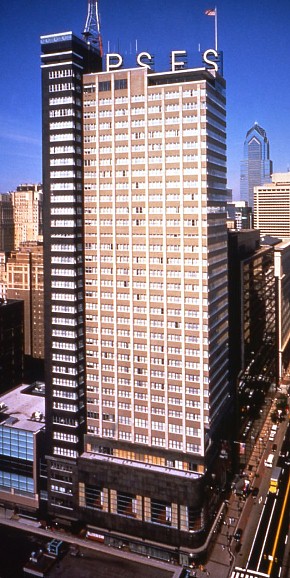2012.07.18 15:45
The Philadelphia School, deterritorialized
| |
As I found out yesterday, Architecture on the Edge of Post Modernism: Collected Essays 1964-1988 (2009) is one of the very few books (if not the only book) on architecture where the term 'Philadelphia School' is used on more than a few separate occasions--six times to be precise, but further reference to the architects of the so-called Philadelphia School implicitly expands the number of citations. In one sense, this shows the relative obscurity of the notion of a Philadelphia School, yet, at the same time, it is not surprising that Stern is the one to have often written about it. As the editor of Perspecta 9/10--a book I often heard referred to as "the Bible" while I attended architecture school in Philadelphia in the mid-1970s--Stern did much to expand the distinction of the Philadelphia School. For example, without Perspecta 9/10 in early 1965 there very likely would not have been Zodiac 17 in 1967.
It may well be that the first time the name Robert Stern appeared within a published architectural text is on the first two pages and the second to last page of Vincent Scully's Louis I. Kahn (1962):
"Much material for them was gathered by Thomas R. Vreeland, Jr., of Philadelphia, a graduate of Yale, who was employed in Kahn's office for a number of years, and they have been completed and rearranged under my direction by Robert A. M. Stern, a graduate student at Yale, whose developing study of the life and times of George Howe, a close associate of Kahn's, has aided me immeasurably in this book."
"But the researches of Banham and, more recently, of Stern, now force us to recognize the tenacious solidity of much of its academic theory, as distilled from Viollet-le-Duc and others by Choisy, Guadet, and Moore."
Auguste Choisy, Histoire de l'Architecture, Paris, 1899. We are indebted to Reyner Banham, in his Theory and Design in the First Machine Age, New York, 1960, for insisting upon the general significance of Choisy in modern architectural theory. A related theme has been treated by Robert Stern in his article on George Howe's academic background, "P.S.F.S.: Beaux-Arts Theory and Rational Expressionism," to be published in the Journal of the Society of Architectural Historians in 1962, along with William Jordy's discussion of the same building as a monument of the International Style.
The last paragraph of "P.S.F.S.: Beaux-Arts Theory and Rational Expressionism" reads:
Louis I. Kahn, in many ways a spiritual successor to George Howe, seems to understand, better than any architect alive today, the Beaux-Arts theories of architecture. These he learned from Paul Cret [It was Esther Israeli Kahn who surprisingly told us in 1975 that our architecture school was actually within a 1920s office building designed by Paul Cret.] and from his years of association with Howe. In his actual building Kahn has not always been able to find suitable expressions for his theoretical convictions, and his growth has been slow. But it seems fitting that today it is Kahn who speaks for an architecture of 'meaningful form' and 'meaningful spaces', an architecture which seeks to use what Howe called 'imaginative gifts', for what he also called a 'penetration of the meaning of things.' Furness, Cret, Howe, and Kahn perhaps constitute a Philadelphia School, one based upon principles other than those of simple parochialism or regionalism. In their architecture of imagination and intellect PSFS will always hold a central and honorable place.*
* Jan C. Rowan's application of the term 'Philadelphia School' to the architects currently practicing and studying in that city seems to me a bit premature. See Progressive Architecture XLII (April 1961).
Apparently, what happened between 1962 and early 1965 is that Venturi and Giurgola, specifically, accumulated a body of both theory and design work which Stern featured prominently within Perspecta 9/10.
| |
William H. Jordy, "PSFS: Its Development and Its Significance in Modern Architecture" in Journal of the Society of Architectural Historians (May 1962).
Robert A. M. Stern, "PSFS: Beaux-Arts Theory and Rational Expresion" in Journal of the Society of Architectural Historians (May 1962).

| |
2004.04.21 09:17
branding and architecture
B. Neuman's point on the precedence of McDonald's and Howard Johnson's within the realm of branded architecture is historically sound. Moreover, these architectures manifest the notion of widespread repeated application (for widespread instant recognition) which is a required ingredient for any genuine branded architecture.
Given the above, I would then place the PSFS skyscraper in the category of ur-branded architecture. The branding and the widespread recognition is there, but not yet the large scale repeated application.
|
